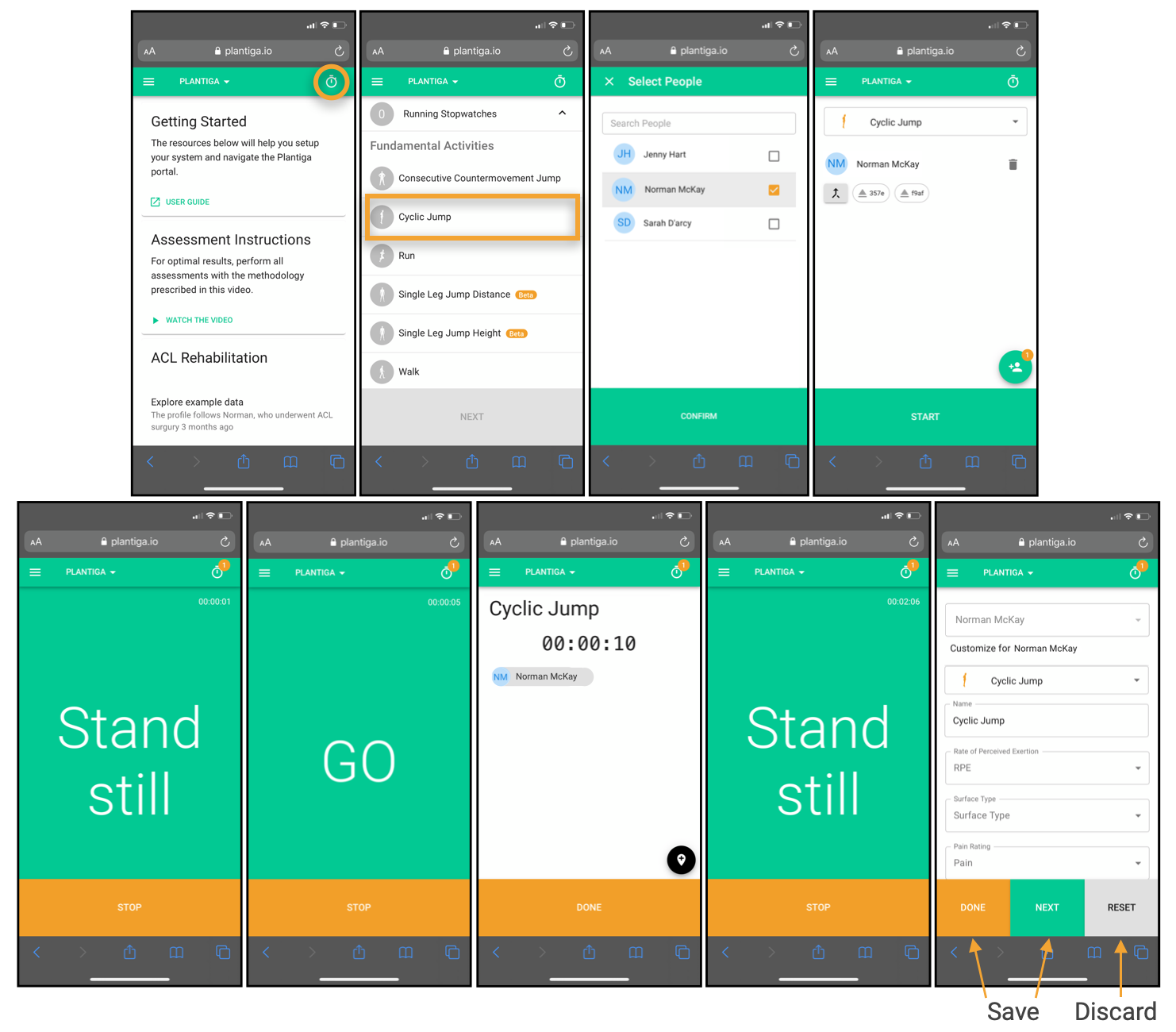Significant for capturing the ability to quickly and effectively change from an eccentric to a concentric contraction.
Similar to the “10/5 RSI test”, the cyclic jump test represents an athlete's ability to effectively utilize the stretch-shortening cycle and explosive capacity during dynamic jumping activities. This is important for a variety of athletic activities and to see changes in fatigue or optimal performance.
Procedure for Plantiga's Standard Cyclic Jump Test:
Tip: Instruct the person you're collecting data on that the aim the aim of this test is to evaluate their ability to use the stretch-shortening cycle in their leg muscles. The majority of the power should come from the calves and the movement should be primarily through the ankles. The person being tested should perform 20 cyclic jumps. Cyclic jumps are characterized by repetitive hops with stiff legs and a slight bend in the knees. The person being tested should try to jump as high as they can and spend as little time on the ground as they can, like they're "hopping on a hot stove."
- Tester navigates to the measure page of the Plantiga app and selects the Cyclic Jump Test.
- Tester selects the subject that will be performing the activity. Address any warnings that may come up once they have been selected.
- Tester instructs subject to stand still with feet planted firmly on the ground.
- Tester starts the Cyclic Jump Test on plantiga.io and the subject remains still as the stopwatch counts down from 5.
- Subject will perform 20 cyclic jumps with their hands on their hips.
- Once the jumps have been performed, the tester instructs the subject to stop and plant their feet firmly on the ground.
- Once still, the tester stops the stopwatch and the subject remains still for 5 seconds.
- Tester fills out optional information (RPE, Pain, Floor type...) and saves the Cyclic Jump Test.
How to Record a Cyclic Jump Test

Measures Obtained from the Cyclic Jump Test:
- Reactive Strength Index (RSI)
- Jump Height
- G-force Asymmetry
.png?height=120&name=Plantiga%20lockup%20black%20(1).png)